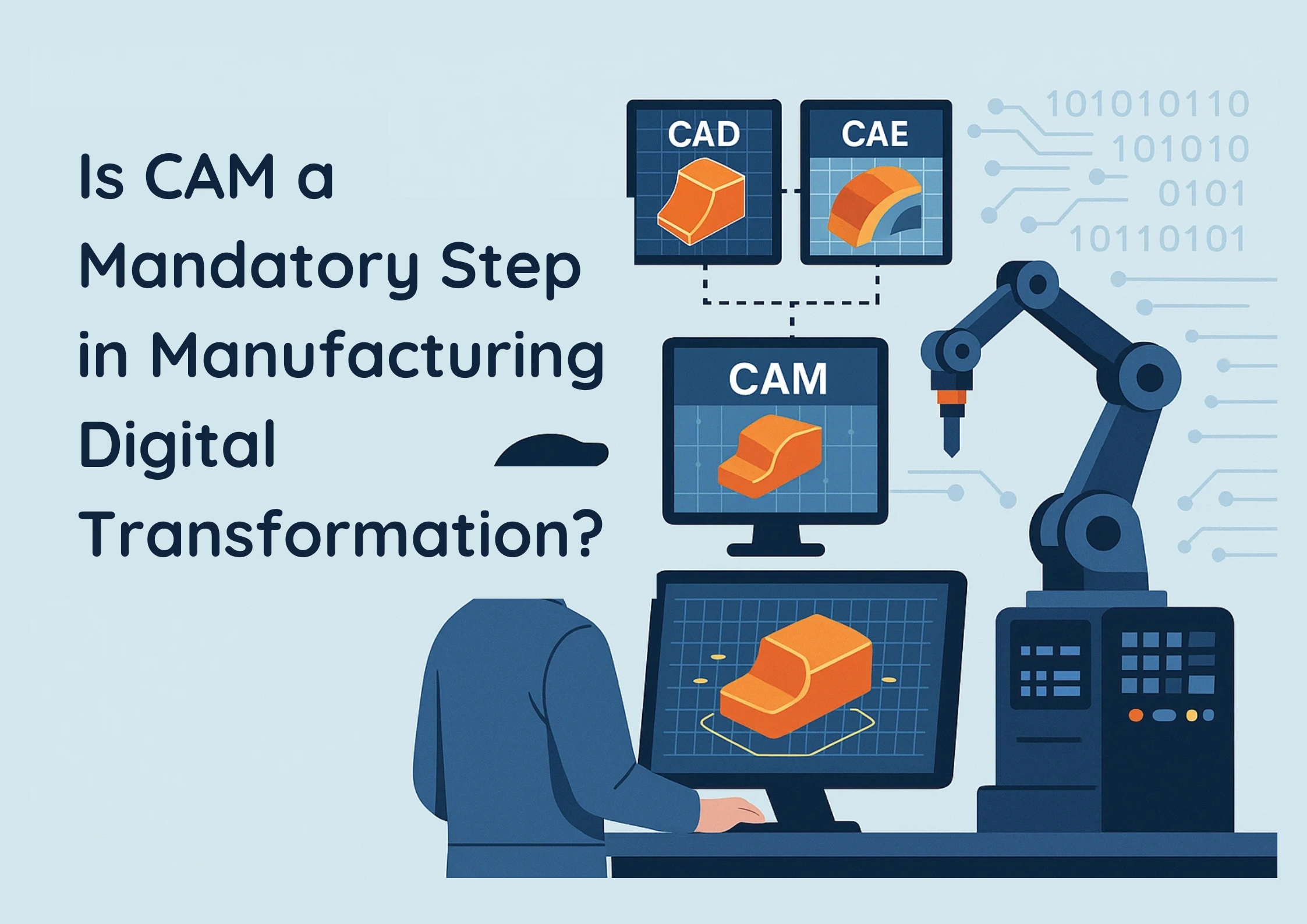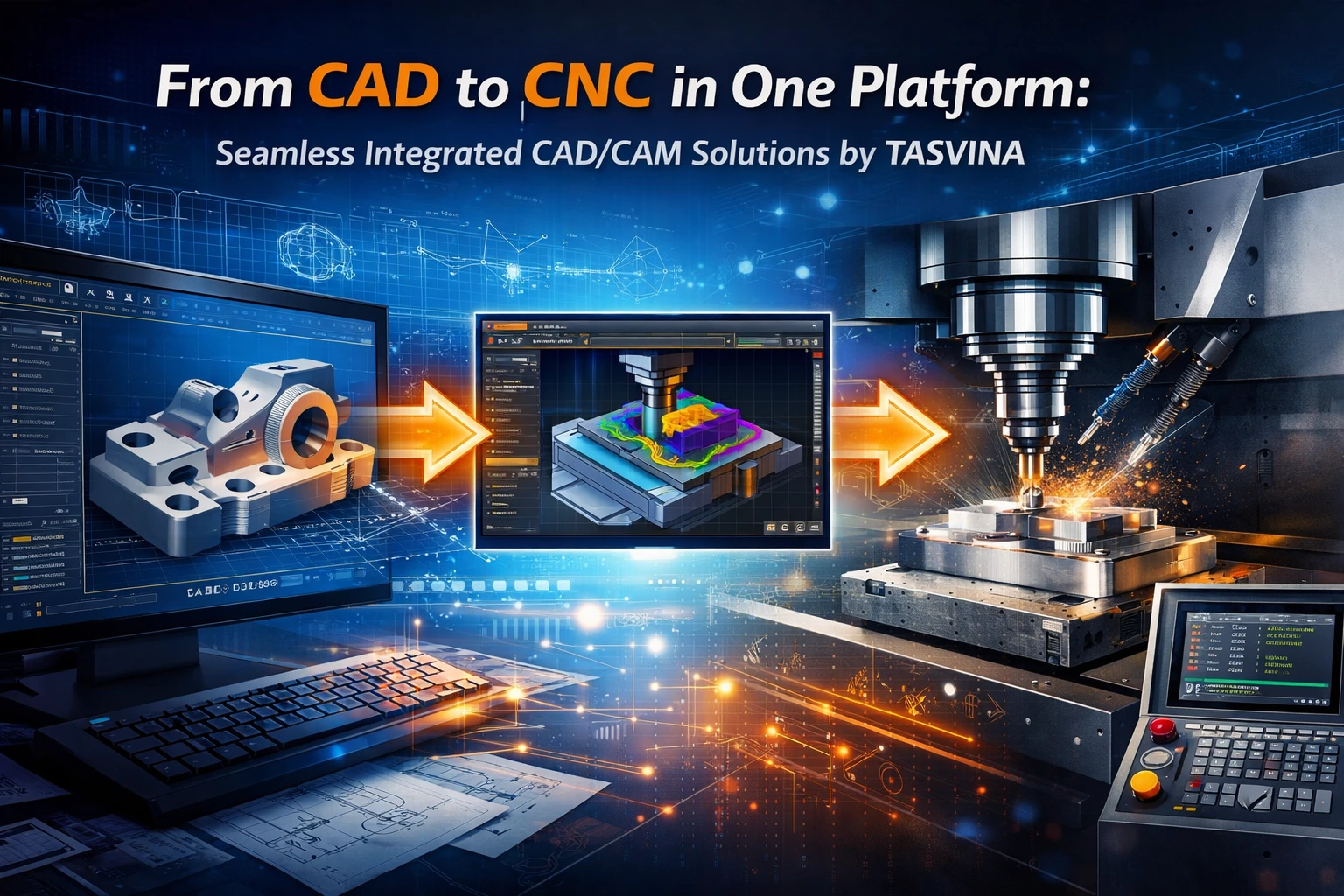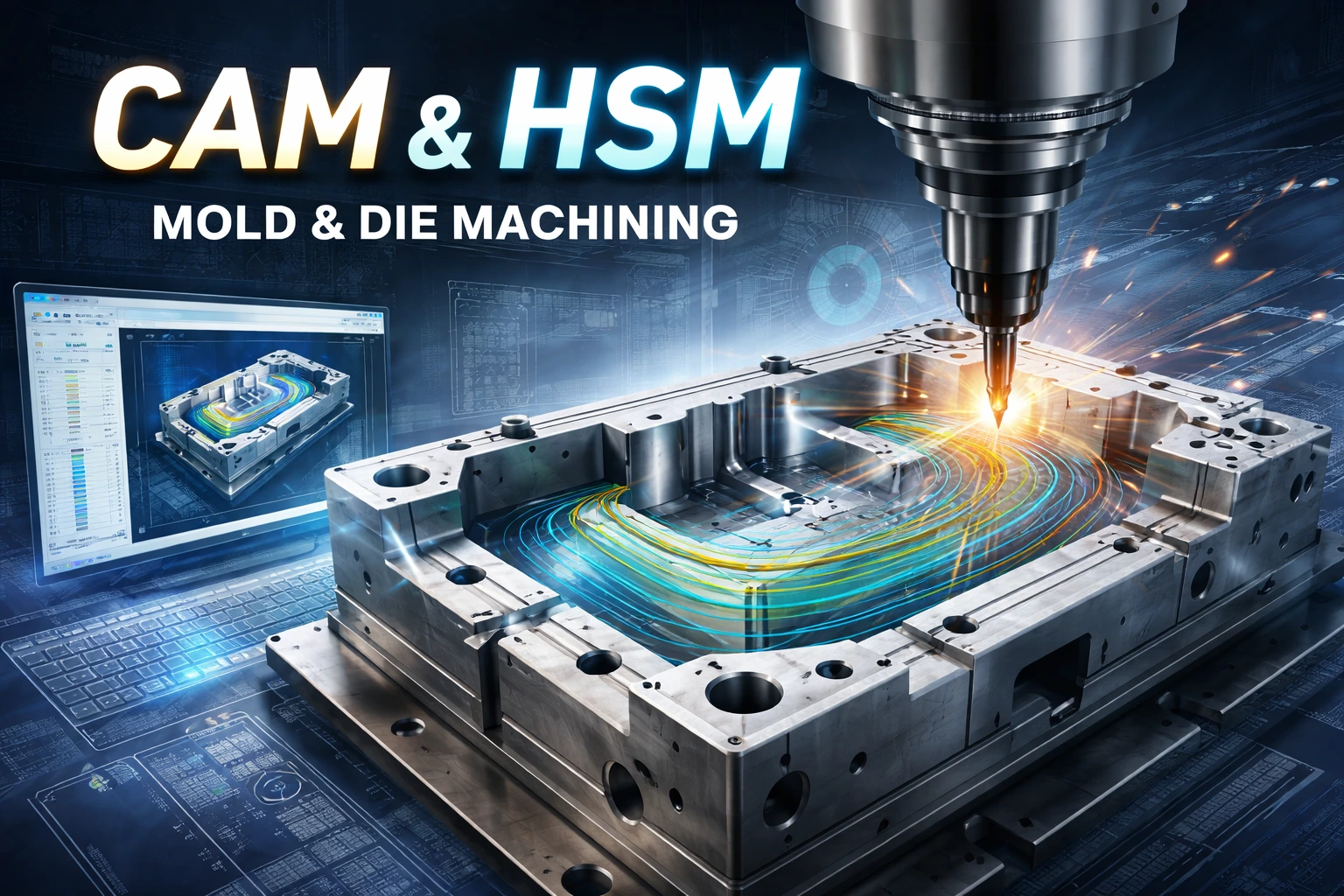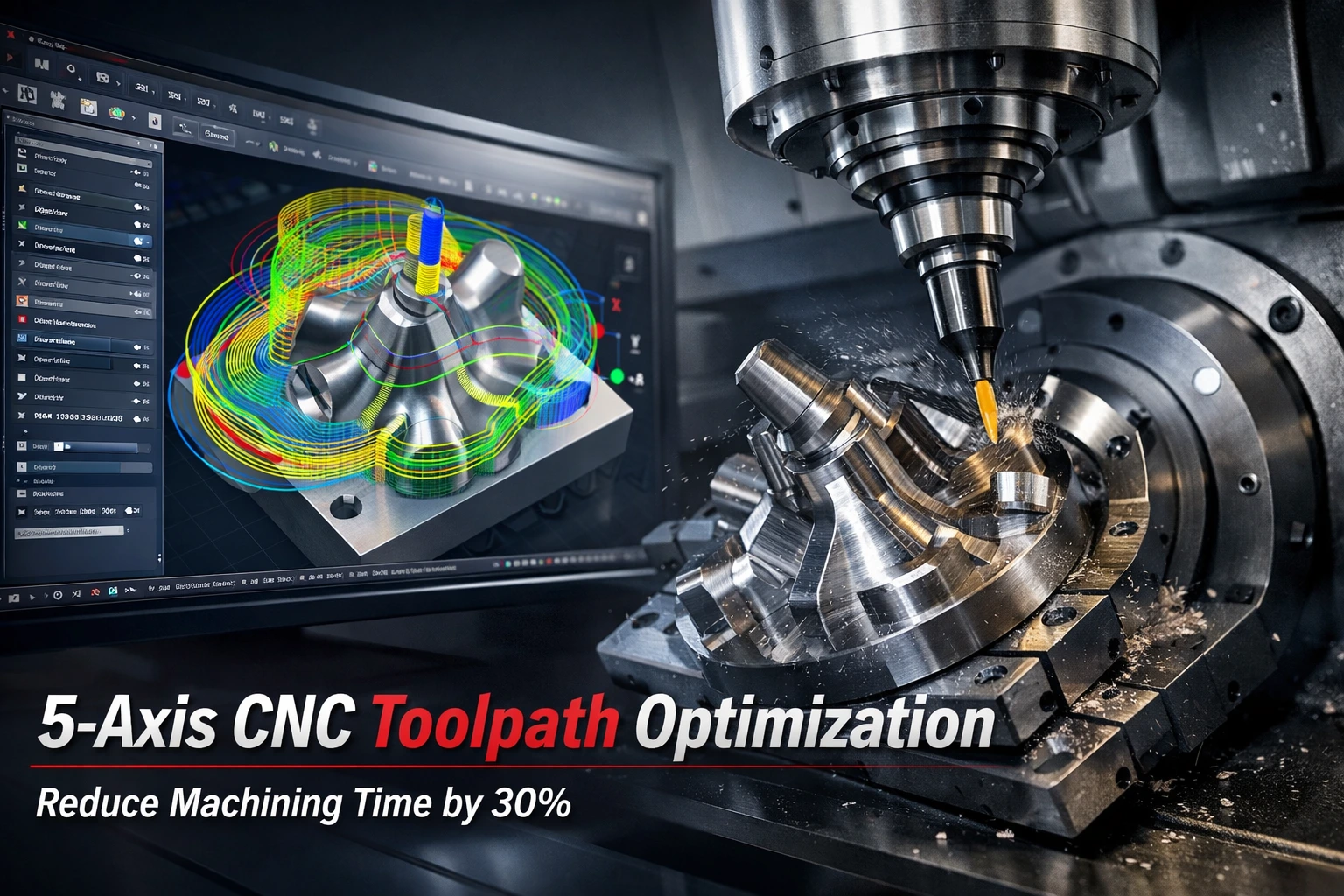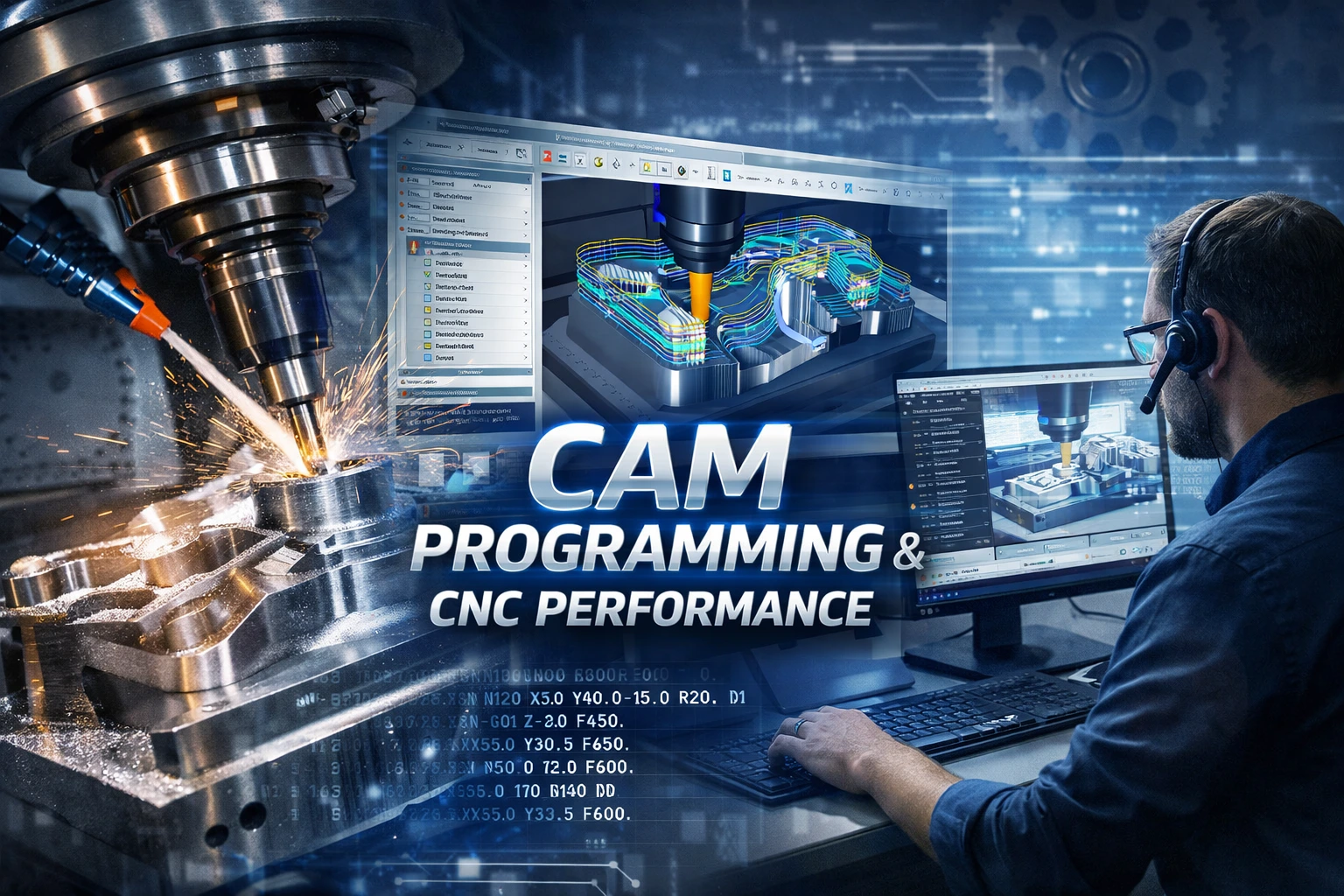In the era of Digital Transformation in Manufacturing, most companies are asking the same question: “Is CAM truly a mandatory step?”
The answer isn’t as simple as “Yes” or “No.”
It depends on each manufacturer’s production goals, level of automation, and digital value chain maturity.
For some, CAM is an optional optimization tool.
For others, especially those striving for smart, data-driven production, it’s a critical foundation for achieving true digital transformation.
1. What is CAM and Why It Matters
In simple terms, CAM is the technology that uses computer software to control manufacturing machines.
It converts 3D CAD models into CNC programs or robotic operations, allowing designs to become real products.
If CAD creates the design, then CAM brings it to life.
Its main advantages include:
- Automating machining processes and reducing human error.
- Optimizing tool paths, cutting time, and material usage.
- Synchronizing design, simulation, and production data.
- Simulating the entire process before production to detect issues early.
In the era of Industry 4.0, CAM is more than just a machining tool — it’s a core data hub that connects to larger systems like PLM (Product Lifecycle Management) and ERP.
2. CAM in the Digital Manufacturing Ecosystem
Digital transformation in manufacturing is not just about “digitizing drawings.”
It’s about restructuring the entire value chain — from design and simulation to production and quality control.
Within that chain, CAM acts as a bridge between virtual design and real-world manufacturing.
Without CAM, design data would remain on the screen.
With CAM, those designs become real, tangible products.
Modern CAM systems can now:
- Connect with CNC machines, robots, and IoT sensors to collect live data.
- Send feedback to design and engineering teams for optimization.
- Use AI-based machining suggestions for better efficiency.
This integration makes CAM an essential pillar of Smart Manufacturing.
3. Is CAM Really Mandatory?
The short answer is: Not for everyone, but almost indispensable if your goal is true digital transformation.
CAM may not be required for:
- Small workshops or manual production with simple operations.
- Processes that do not rely on CNC or high-precision machining.
However, CAM becomes essential when your business wants to:
- Increase productivity and automation.
- Maintain consistent product quality.
- Integrate manufacturing data into enterprise systems.
- Move toward a Smart Factory model.
Without CAM, it’s hard to achieve seamless data flow across departments.
Digitalization would stop at “software adoption,” not “process transformation.”
4. CAM – The Data Bridge for Smart Factories
In modern factories, data is the driving force.
CAM serves as the data bridge connecting: CAD (Design) → CAM (Manufacturing) → CAE (Simulation) → PLM (Lifecycle Management) → ERP (Enterprise Management)
When these systems are linked together, companies benefit from:
- A closed-loop digital workflow.
- Fewer data inconsistencies and human errors.
- Shorter time-to-market for new products.
- Better decision-making through real-time insights.
In short, CAM not only makes production faster — it makes your factory smarter.
5. Conclusion: CAM – The Foundation for Smart Manufacturing
CAM is not just a technical tool. It’s the foundation for modern digital manufacturing.
By combining CAD, CAE, and CAM, companies can:
- Standardize production processes.
- Reduce prototyping and rework costs.
- Leverage data for smarter decisions.
- Strengthen global competitiveness.
TASVINA – Your Technology Partner for Digital Transformation
At TASVINA, we believe digital transformation is more than software—it’s about redefining how manufacturers operate.
With deep expertise in CAD/CAE/CAM and automation, we help manufacturing companies:
- Apply cutting-edge engineering technologies.
- Improve productivity and product quality.
- Build smart factories powered by data and innovation.
👉 Learn more at: https://tasvina.com/en/




